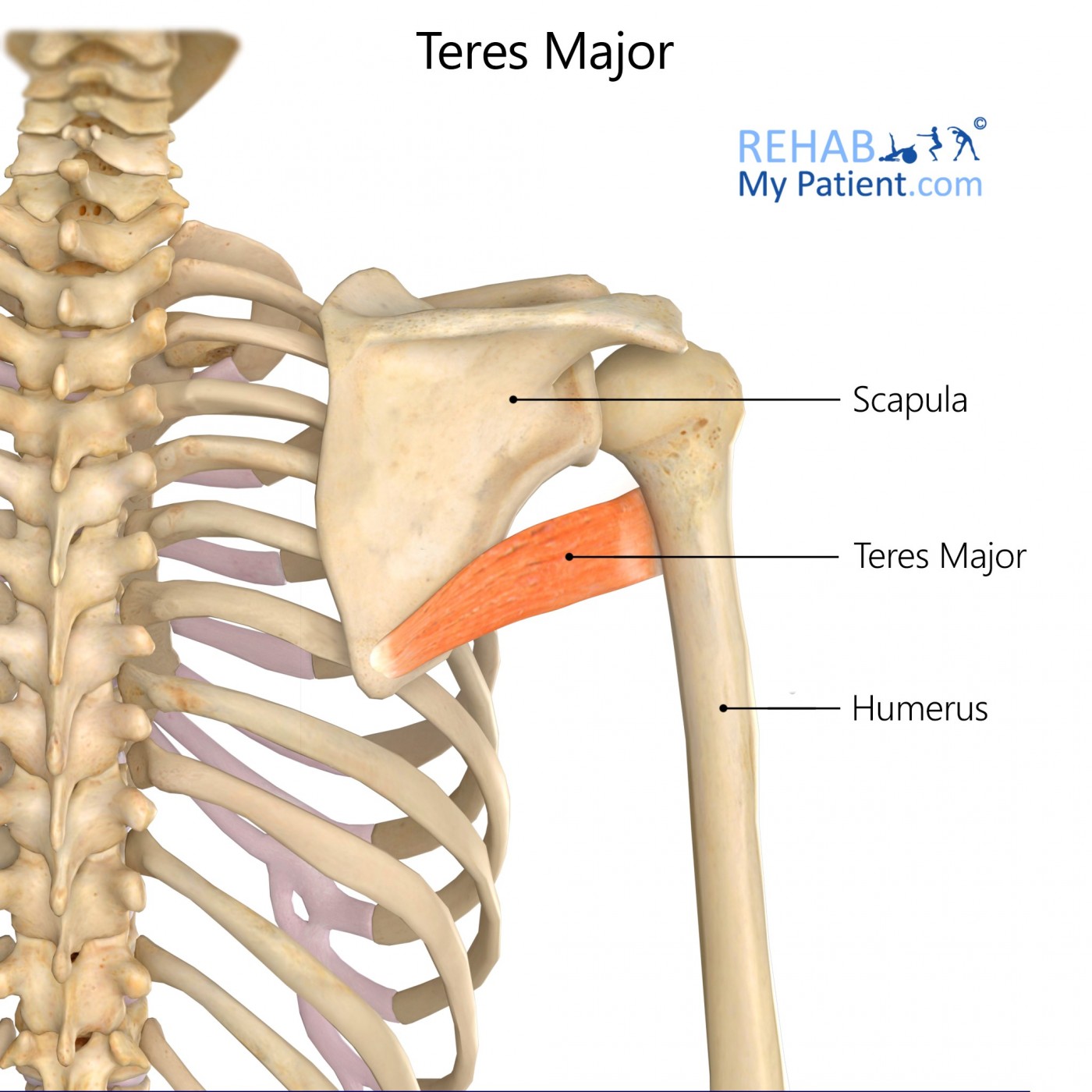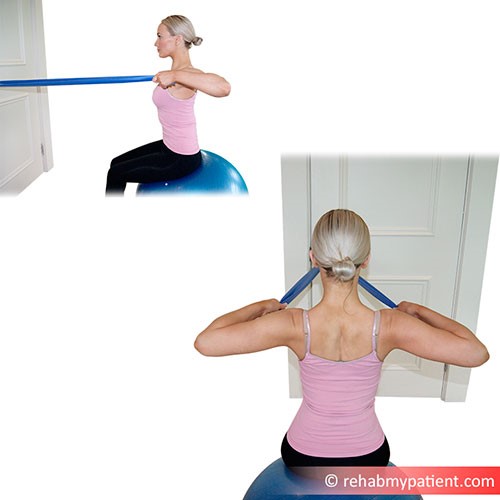
General information
The teres major is one of the muscles found in the upper arm. It is one of the seven scapulohumeral muscles in the body, involved in moving and stabilising the shoulder. Even though the muscle is thick, it is somewhat flat, and innervated by the lower subscapular nerve.
Literal meaning
Greater round or rounded off.
Interesting information
Injuries can happen from a number of different conditions. Extreme amounts of pressure can cause the muscle to tear, resulting in pain and difficulty with activities that require sideways or backwards movements with the arm. Isolated tears of the teres major are quite uncommon, but may occur in baseball or cricket players, especially pitchers and bowlers.
Strains to the muscle are the direct result of not properly warming up before engaging in a workout. Since this is less painful than a tear, it can easily subside with a little rest and time. To prevent strains, professional bodybuilders are advised to properly warm-up before engaging in a workout.
The teres major muscle is susceptible to the development of myofascial pain syndrome. Stretch or impact injuries to the teres major muscle sustained while playing sports or in motor vehicle accidents, as well as falls onto the lateral scapula, have been implicated in the evolution of teres major syndrome. In addition, repeated microtrauma secondary to reaching up and behind, such as when retrieving a briefcase from the backseat of a car, overhead throwing, and other sports injuries may result in the development of myofascial pain in the teres major muscle.
Teres Major Syndrome, a myofascial pain syndrome affecting the teres major muscle, has been observed in patients. This can occur as a result of stretch or impact injuries from playing sports, vehicle accidents, or falls onto the lateral scapula. The repeated microtrauma from reaching up and behind, such as throwing overhead or grabbing items from the backseat of a car, can also lead to this syndrome developing. When examining patients with this syndrome, they tend to have trigger points lateral to the scapula and also referred pain elsewhere in the area. A jump sign – involuntary withdrawal of the stimulated muscle – is also a common symptom.
Origin
Posterior surface for the inferior angle of the scapula.
Insertion
Medial ridge for the intertubercular groove within the humerus.
Function
Adduction, medial rotation and extension of the humerus.
Nerve supply
Lower subscapular nerve C4-C7.
Blood supply
Thoracodorsal artery.
Posterior circumflex humeral artery.
Circumflex scapular artery.

Relevant research
This study set out to collate information on cases of teres major and latissimus dorsi tendon tears among Major League baseball players. Using injury data collected from three clubs over ten seasons, ten injuries were recorded to these muscles, including four isolated teres major tears and one combined injury. Nine of the ten players returned to baseball within three months of their injury. One player retired at the end of the season due to ongoing shoulder issues, but the others recovered fully. The study concluded that, although uncommon, tears of these muscles do occur in professional baseball players. The injuries can be identified on standard shoulder MRIs, but more detailed larger field-of-view images are needed to make an accurate assessment of the injury. Most of these injuries heal without the need to operate, and most players are able to return to play within three months.
Schickendantz MS, Kaar SG, Meister K, Lund P, Beverley L. Latissimus dorsi and teres major tears in professional baseball pitchers: a case series. Am J Sports Med. 2009;37(10):2016-2020. doi:10.1177/0363546509335198.
Teres major exercises
Seated row with resistance band
Place the resistance band around a solid anchor. Position the body into a chair just a few feet away from where the anchor is with the band at shoulder height. Grab either end of the band with both hands while the palms are facing downwards. It may be necessary to vary the amount of resistance the band has by adjusting the position of the hands. Grab the band closer to the center for additional resistance, or closer together for a smaller amount of resistance. Sit in a chair with the feet flat on the floor. Squeeze the shoulder blades together and pull the band to the chest while bending the elbows. Return to the starting position slowly and release the shoulder blades. Repeat the exercise eight to 12 times.

Sign Up
Sign up for your free trial now!
Get started with Rehab My Patient today and revolutionize your exercise prescription process for effective rehabilitation.
Start Your 14-Day Free Trial